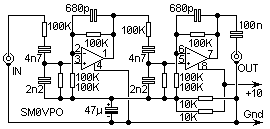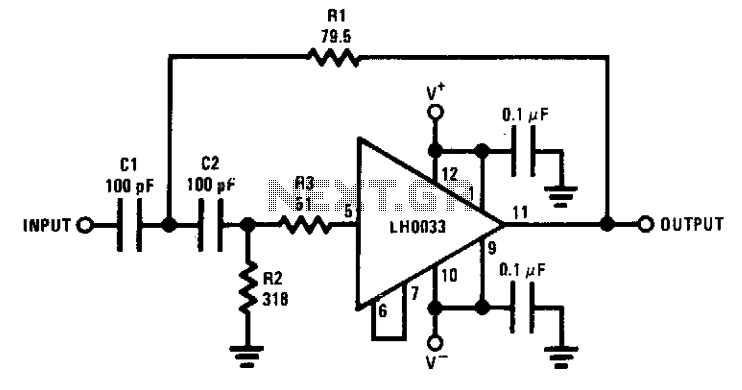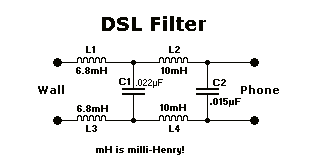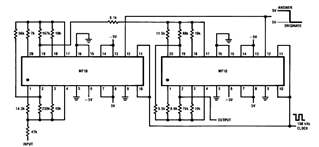
Scratch Filter
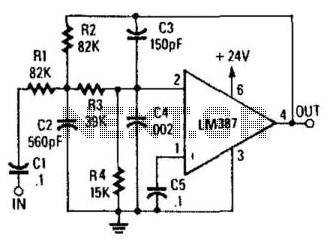
Designed to produce a 12-dB/octave roll-off above the 10-kHz cutoff frequency, this low-pass active filter will help reduce needle scratch on records. It utilizes an LM387 low-noise amplifier integrated circuit (IC).
The low-pass active filter described is engineered to attenuate high-frequency signals effectively, making it suitable for applications where minimizing unwanted high-frequency noise is essential. The design features a 12-dB/octave roll-off characteristic, which means that for every octave above the cutoff frequency of 10 kHz, the output signal is reduced by 12 decibels. This gradual attenuation helps maintain audio quality while effectively filtering out high-frequency interference.
The core of the filter is the LM387 low-noise amplifier IC. This component is chosen for its high performance in audio applications, providing low distortion and high fidelity. The LM387 is configured in a feedback arrangement that defines the filter's characteristics. The circuit typically includes resistors and capacitors that set the cutoff frequency and determine the roll-off rate.
The input stage of the filter receives the audio signal, which is then processed by the LM387. The output stage delivers the filtered audio signal to the next stage in the audio chain, such as a preamplifier or directly to a speaker system.
In practical applications, this low-pass filter is particularly beneficial for vinyl record playback systems, where it minimizes the audible effects of needle scratches and other high-frequency artifacts, thus enhancing the overall listening experience. The filter can be integrated into existing audio equipment or used as a standalone module in custom audio systems. Proper power supply decoupling and grounding techniques are essential to maximize performance and minimize noise in the final output. Designed to produce 12-dB/octave roll-off above the 10-kHz cutoff frequency, this LP active filter will help reduce needle s cratch on records. It uses an LM387 low-noise amplifier IC.
The low-pass active filter described is engineered to attenuate high-frequency signals effectively, making it suitable for applications where minimizing unwanted high-frequency noise is essential. The design features a 12-dB/octave roll-off characteristic, which means that for every octave above the cutoff frequency of 10 kHz, the output signal is reduced by 12 decibels. This gradual attenuation helps maintain audio quality while effectively filtering out high-frequency interference.
The core of the filter is the LM387 low-noise amplifier IC. This component is chosen for its high performance in audio applications, providing low distortion and high fidelity. The LM387 is configured in a feedback arrangement that defines the filter's characteristics. The circuit typically includes resistors and capacitors that set the cutoff frequency and determine the roll-off rate.
The input stage of the filter receives the audio signal, which is then processed by the LM387. The output stage delivers the filtered audio signal to the next stage in the audio chain, such as a preamplifier or directly to a speaker system.
In practical applications, this low-pass filter is particularly beneficial for vinyl record playback systems, where it minimizes the audible effects of needle scratches and other high-frequency artifacts, thus enhancing the overall listening experience. The filter can be integrated into existing audio equipment or used as a standalone module in custom audio systems. Proper power supply decoupling and grounding techniques are essential to maximize performance and minimize noise in the final output. Designed to produce 12-dB/octave roll-off above the 10-kHz cutoff frequency, this LP active filter will help reduce needle s cratch on records. It uses an LM387 low-noise amplifier IC.

